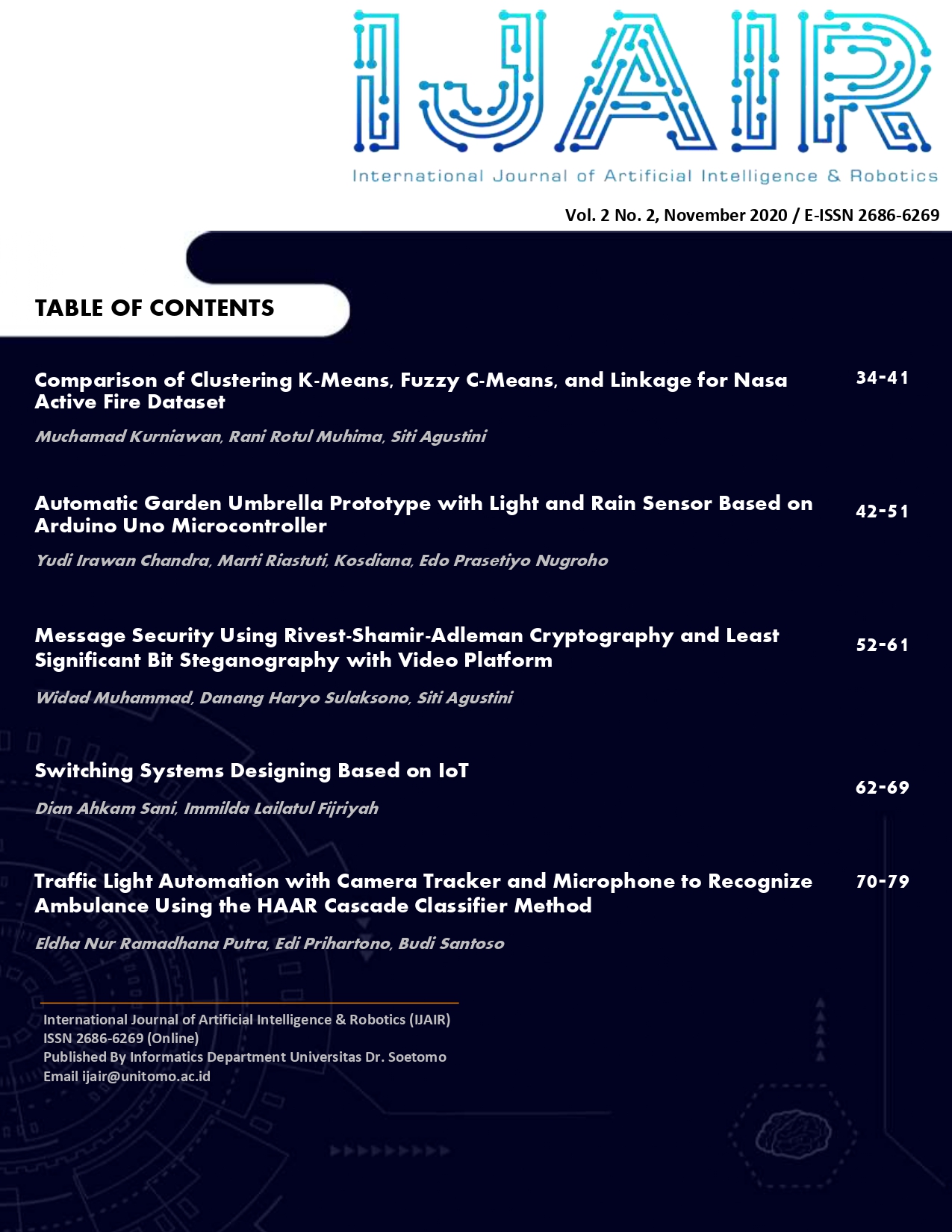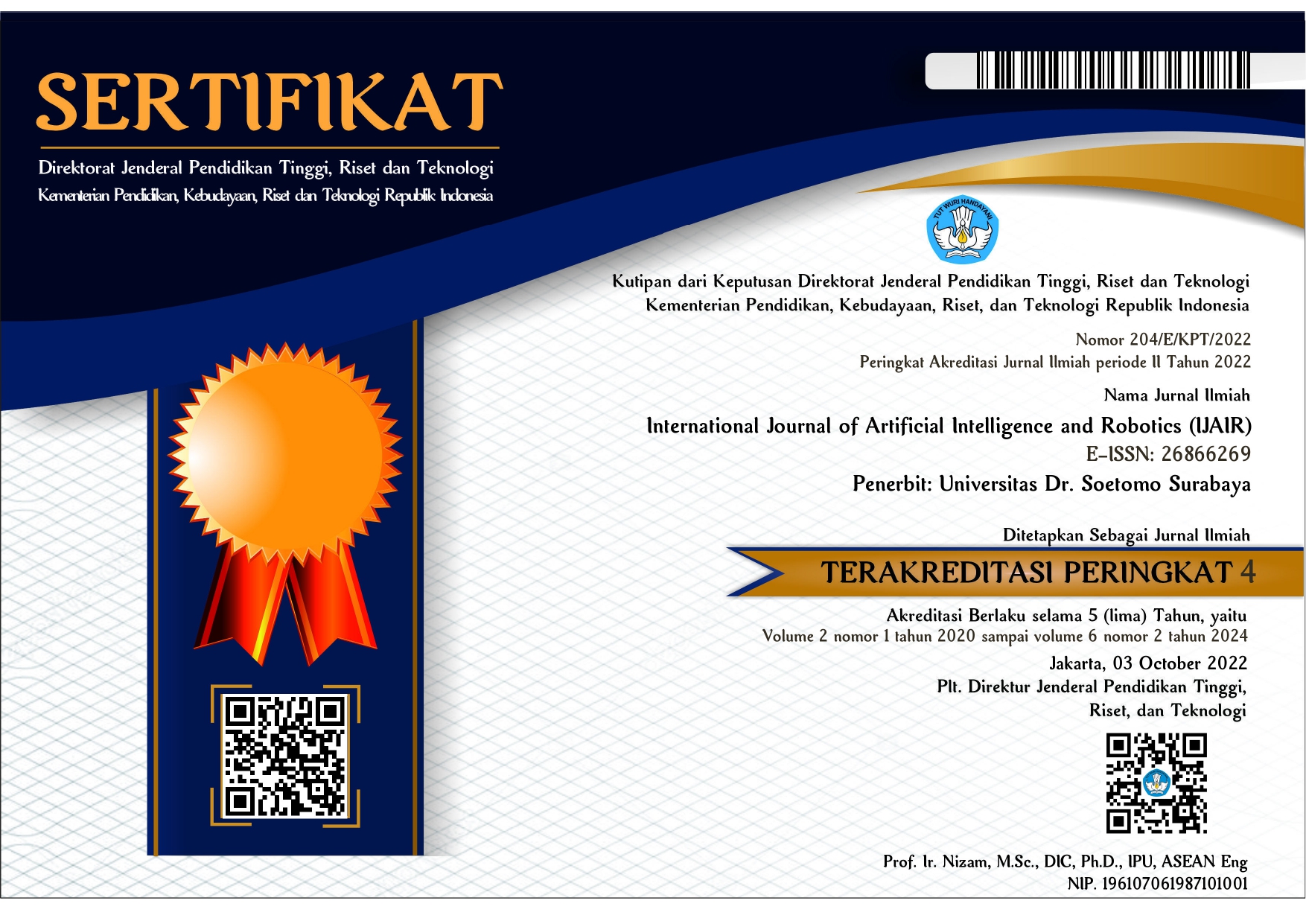[1]Rachmawati, Dian, Amalia, Amalia & Elviwani. "Combination of Rivest-Shamir-Adleman Algorithm and End of File Method for Data Security". Indonesia: IOP Access, 2018, pp. 1
[2]Agustini, S., Kurniawan, M., “Peningkatan Keamanan Teks Menggunakan Kriptografi Dan Steganografiâ€, SCAN, Vol. XIV, No.3, 2019.
[3]Munir, Rinaldi. (2006). Kriptografi. Bandung: Informatika.
[4]Putri, Geby G., Styorini, Wiwin & Rahayani, R. Dian. “Analisis Kriptografi Simetris AES dan Kriptografi Asimetris RSA pada Enkripsiâ€. Indonesia: Jurnal Informatika Mulawarman, 2018, pp. 198.
[5]Yatini, Indra & Nurwiyati, F. Wiwiek. “Algoritma Least Significant Bit Untuk Analisis Steganografiâ€. Indonesia: Seminar Nasional Informatika, 2015, pp. 695.
[6]Anti, Ulan A., Krisdalaksana, Awang H. & Khairina, Dyna M. “Steganografi Pada Video Menggunakan Metode Least Significant Bit (LSB) Dan End Of File (EOF)â€. Indonesia: Jurnal Informatika Mulawarman, 2017, pp. 107-108.
[7]Insanudin, E. "Implementation of Python Source Code Comparison Results with Java using Bubble Sort Method". Indonesia: IOP Access, 2018, pp. 4.
[8]Yunus, Mahmuddin & Harjoko, Agus. “Penyembunyian Data pada File Video Menggunakan Metode LSB dan DCTâ€. Indonesia: Universitas Gadjah Mad., 2014, pp. 85-86.
[9]Male, Ghazali Moenandar, Wirawan & Setijadi, Eko. “Analisa Kualitas Citra Pada Steganografi Untuk Aplikasi e-Govermentâ€. Indonesia: Digilab Institut Teknologi Sepuluh November, 2012, pp. 4.
[10]Murinto, Putra, Willy Permana & Handayaningsih. "Analisis Perbandingan Histogram Equalization Dan Model Logarithmic Image Processing (LIP) Untuk Image Enhancement". Indonesia: Jurnal Informatika, 2008, pp. 204.
[11]Hasan, Nur Fitrianingsih, Dengen, Christin Nandari & Ariyus, Dony. Analisis Histogram Steganografi Least Significant Bit Pada Citra Grayscale. Indonesia: Digital Zone., 2020, pp. 26-27.
 Abstract views: 486
,
Abstract views: 486
,
 PDF downloads: 627
PDF downloads: 627
 Copyright Transfer Agreement downloads: 0
Copyright Transfer Agreement downloads: 0
 Ethical Statement downloads: 0
Ethical Statement downloads: 0
 Hasil Cek Plagiasi downloads: 0
Hasil Cek Plagiasi downloads: 0
















